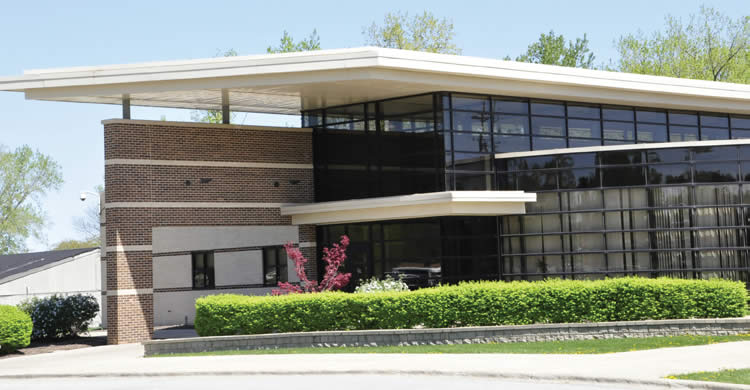Washington, DC–(ENEWSPF)–December 10, 2015 – 11:15 A.M. EST
THE PRESIDENT: Welcome to the White House. First of all, I want to thank Antonio for being such an outstanding role model. Back in 2011 — when he was much shorter — (laughter) — I visited Kenmore Middle School and saw firsthand their great work helping students like Antonio achieve their potential. And that’s why we’re here today.
This is an early Christmas present. After more than 10 years, members of Congress from both parties have come together to revise our national education law. A Christmas miracle: A bipartisan bill signing right here. (Laughter and applause.) So I was telling Lamar we should do this more often. (Laughter.) I love it when we’re signing bipartisan bills. Today, I’m proud to sign a law that’s going to make sure that every student is prepared to succeed in the 21st century.
The goals of No Child Left Behind, the predecessor of this law, were the right ones: High standards. Accountability. Closing the achievement gap. Making sure that every child was learning, not just some. But in practice, it often fell short. It didn’t always consider the specific needs of each community. It led to too much testing during classroom time. It often forced schools and school districts into cookie-cutter reforms that didn’t always produce the kinds of results that we wanted to see. And that’s okay — sometimes reform efforts require you try something, it doesn’t work, you learn some lessons, and you make modifications.
So my administration, when we came into office, tried some different things. We tried to lead a Race to the Top. That’s why we acted to give states that were willing to embrace reforms — that they helped to formulate — more flexibility in how to improve student achievement. They were receiving waivers from some of the requirements of No Child Left Behind. But the truth is that could only do so much. And that’s why, for years, I have called on Congress to come together and get a bipartisan effort to fix No Child Left Behind.
It took a lot of time; it required a lot of work. But thanks to the tireless efforts of many of the people on this stage and some people who are in attendance here today, we finally reached that deal.
There are some people that I especially want to thank. First of all, Senators Lamar Alexander and Patty Murray on the Senate side, and Representatives John Kline and Bobby Scott on the House side, as well as their dedicated staffs. This would not have happened without them. (Applause.)
And I just want to point out that it’s not as if there weren’t some significant ideological differences on some of these issues. (Laughter.) No, there were, but I think this is really a good example of how bipartisanship can work. People did not agree on everything at the outset, but they were willing to listen to each other in a civil, constructive way, and to work through these issues, compromise where necessary, while still keeping their eye on the ball. And I think it’s really a testament of the four leaders of the respective committees that they set that kind of tone. And that’s something that we don’t always see here in Washington. There wasn’t a lot of grandstanding, not a lot of posturing — just a lot of really good, hard work. So I just want to, again, thank them for the outstanding work that they did. (Applause.)
I also want to thank my outgoing Secretary of Education Arne Duncan. Arne has dedicated his life to the cause of education — and sometimes in the nicest possible way, he has gotten on people’s nerves because he has pushed them and prodded them and tried to make sure that we set high expectations and that we are holding ourselves accountable for children’s performance — or the school’s performance and how they were delivering for our kids. And had he not been, I believe, as tenacious as he was, I think that we would not have as good of a product as we do here today. And so I could not be prouder of Arne Duncan. And I want acknowledge him. (Applause.)
We are going to miss Arne Duncan a lot. Fortunately, in addition to some great staff that he assembled that is going to be staying on, we also have a great replacement for Arne in Dr. John King, who is going to be doing outstanding work helping to implement this. (Applause.)
In addition, obviously we’ve had some outstanding advocates. We’ve got our teachers unions, we’ve got our civil rights organizations, we’ve got philanthropies — all of who — community groups — who have been active and involved, and the governors organizations and school districts have also been involved, the superintendants. So we want to thank all them for their contributions. All the stakeholders have really buckled down to make this day possible.
And the law comes at an important moment. Over the past seven years, the good news is that our students have made real strides. We’ve seen states raise academic expectations for all students. That means that we’re in a better position to out-teach and out-compete other nations at a time when knowledge is really the single-biggest determinant of economic performance. High school graduation rates have reached an all-time high; dropout rates have hit historic lows. The number of high schools so bad they’re called “dropout factories” has been cut almost in half. We’re training tens of thousands of outstanding math and science teachers. More students are graduating from college than ever before, and more than a million additional black and Hispanic students are now going to college.
So there is some real good work that’s been done, a foundation to build from. But we’re here because we all know that there’s a lot more work to be done. As wonderful as Antonio’s school is, as wonderful as a learning experience is as a lot of our young people are receiving, we know that there are other schools that just aren’t hitting the mark yet. And in today’s economy, a high-quality education is a prerequisite for success.
We’re going to have to have our young people master not just the basics but also become critical thinkers and creative problem solvers. And our competitive advantage depends on whether our kids are prepared to seize the opportunities for tomorrow. So we need to build on the momentum that has already been established. We’ve got to learn what works and do more of that, and we’ve got to get rid of the stuff that doesn’t work. And that’s exactly what the Every Student Succeeds Act does.
First, this law focuses on a national goal of ensuring that all of our students graduate prepared for college and future careers. It builds on the reforms that have helped us make so much progress already, holding everybody to high standards for teaching and learning, empowering states and school districts to develop their own strategies for improvement, dedicating resources to our most vulnerable children. And this law requires states to invest in helping students and schools improve, and focusing on the lowest-performing schools and closing those big achievement gaps.
Second, this bill makes long-overdue fixes to the last education law, replacing the one-size-fits-all approach to reform with a commitment to provide every student with a well-rounded education. It creates real partnerships between the states, which will have new flexibility to tailor their improvement plans, and the federal government, which will have the oversight to make sure that the plans are sound.
It helps states and districts reduce unnecessary standardized tests — something we talked about a couple of months ago, because what we want to do is to get rid of unnecessary standardized tests so that more teachers can spend time engaging in student learning while, at the same time, making sure that parents and teachers have clear information on their children’s academic performance.
Number three, we know that the early years can make a huge difference in a child’s life, so this law lays the foundation to expand access to high-quality preschools, and it creates incentives for innovative approaches to learning and for supporting great teachers.
And finally, this bill upholds the core value that animated the original Elementary and Secondary Education Act signed by President Lyndon Johnson — the value that says education, the key to economic opportunity, is a civil right. With this bill, we reaffirm that fundamental American ideal that every child, regardless of race, income, background, the zip code where they live, deserves the chance to make out of their lives what they will.
So this is a big step in the right direction, a true bipartisan effort, a reminder of what can be done when people enter into these issues in a spirit of listening and compromise. But, of course, now the hard work begins. Laws are only as good as the implementation. And that means that we’re going to have to be engaging with the schools and communities all across the country, educators, school leaders, families, students, elected officials, community leaders, philanthropies — all to make the promise of this law reality.
And, by the way, it’s going to take students like Antonio. He’s doing his part. He’s taking advanced classes to get a head start on high school credits. He plays the violin. He plays sports. He volunteers. He owns one share of stock in Tesla. (Laughter.) So he’s clearly going places. I’d invest in him if I could. But one of the reasons Antonio is thriving is he’s got great teachers and a great principal at Kenmore. They saw that spark in him, and, like all great educators, they’re helping him to harness his energy and his curiosity and his talents.
And that’s what we want every single child in America to have. We just want to give them a chance. And so many of them are full of that same talent and drive, but we let them slip through the cracks, or we’re not creative enough in thinking about how they can be engaged, or they just don’t have the resources that they need in the classroom, or they fell behind early because they didn’t get the support that they needed given the tough circumstances they were born into.
And we want to make sure that through this piece of legislation, with our hard work, with our focus, with our discipline, with our passion, with our commitment, that every kid is given the same opportunities that Antonio is getting. I want this not just because it’s good for the students themselves, not just because it’s good for the communities involved, not only because it’s good for our economy, but because it really goes to the essence of what we are about as Americans.
There was a time I think when upward mobility was the hallmark of America. We’ve slipped on that front compared to other countries. And some of it is because where we used to be so far ahead of other countries in investing in education for every child, now on some indicators, we’ve been lagging behind. Hopefully, this is going to get us back out front.
There’s nothing more essential to living up to the ideals of this nation than making sure every child is able to achieve their God-given potential. And I could not be prouder of the people on this stage and those of you in the audience who helped us take just one step closer to that reality.
So with that, let me sign this bill. (Applause.)
(The bill is signed.)
END
11:31 A.M. EST
Source: www.whitehouse.gov








